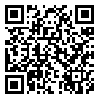1. Orben A, Tomova L, Blakemore SJ. The effects of social deprivation on adolescent development and mental health. Lancet Child Adolesc Health. 2020;4(8):634–40. [
DOI]
2. Lees B, Meredith LR, Kirkland AE, Bryant BE, Squeglia LM. Effect of alcohol use on the adolescent brain and behavior. Pharmacol Biochem Behav. 2020;192:172906. [
DOI]
3. Brown IE, Percy ME. A comprehensive guide to intellectual and developmental disabilities. Brookes Publishing Co; 2007.
4. Livingstone KM, Isaacowitz DM. Age and emotion regulation in daily life: Frequency, strategies, tactics, and effectiveness. Emotion. 2021;21(1):39–51. [
DOI]
5. Cui Y, Li F, Leckman JF, Guo L, Ke X, Liu J, et al. The prevalence of behavioral and emotional problems among Chinese school children and adolescents aged 6–16: a national survey. Eur Child Adolesc Psychiatry. 2021;30(2):233–41. [
DOI]
6. Bandura A. Guide for constructing self-efficacy scales. In: Pajares F, Urdan T; editors. Self-efficacy beliefs of adolescents. Greenwich, CT: Information Age Publishing; 2006.
7. Bucura E. Fostering self-efficacy among adolescents in secondary general music. General Music Today. 2019;32(3):5–12. [
DOI]
8. Andretta JR, McKay MT. Self-efficacy and well-being in adolescents: a comparative study using variable and person-centered analyses. Child Youth Serv Rev. 2020;118:105374. [
DOI]
9. Golestan A, Salemi A, Zarghami E. Comparison of identification styles, self-efficacy and emotional intelligence of normal adolescents and adolescents with behavioral disorder. Empowering Exceptional Children. 2018;9(3):99–109. [Persian] [
Article]
10. Chang CW, Yuan R, Chen JK. Social support and depression among Chinese adolescents: The mediating roles of self-esteem and self-efficacy. Child Youth Serv Rev. 2018;88:128–34. [
DOI]
11. Huang CC, Chen Y, Greene L, Cheung S, Wei Y. Resilience and emotional and behavioral problems of adolescents in China: effects of a short-term and intensive mindfulness and life skills training. Child Youth Serv Rev. 2019;100:291–7. [
DOI]
12. Wills TA, Pokhrel P, Morehouse E, Fenster B. Behavioral and emotional regulation and adolescent substance use problems: a test of moderation effects in a dual-process model. Psychol Addict Behav. 2011;25(2):279–92. [
DOI]
13. Gratz KL, Roemer L. Multidimensional assessment of emotion regulation and dysregulation: development, factor structure, and initial validation of the difficulties in emotion regulation scale. J Psychopathol Behav Assess. 2004;26(1):41–54. [
DOI]
14. Grant JE, Potenza MN, Weinstein A, Gorelick DA. Introduction to behavioral addictions. Am J Drug Alcohol Abuse. 2010;36(5):233–41. [
DOI]
15. Khanipour H, Hakim-Shooshtari M, Borjali A, Golzari M, Falsafinejad M. Relationship between impulse control difficulties and non-suicidal self-injury in adolescents with childhood maltreatment history: mediating role of self-inadequacy. Iranian Journal of Psychiatry & Clinical Psychology. 2015;20(4):339–48. [Persian] [
Article]
16. Taquette SR, Monteiro DLM. Causes and consequences of adolescent dating violence: a systematic review. J Inj Violence Res. 2019;11(2):137–47. [
DOI]
17. Bonnaire C, Liddle HA, Har A, Nielsen P, Phan O. Why and how to include parents in the treatment of adolescents presenting Internet gaming disorder? J Behav Addict. 2019;8(2):201–12. [
DOI]
18. Hogue A, Henderson CE, Dauber S, Barajas PC, Fried A, Liddle HA. Treatment adherence, competence, and outcome in individual and family therapy for adolescent behavior problems. J Consult Clin Psychol. 2008;76(4):544–55. [
DOI]
19. Dweck C. What having a "growth mindset" actually means [Internet]. Harvard Business Review; 2016.
20. Yeager DS, Dweck CS. What can be learned from growth mindset controversies? American Psychologist. 2020;75(9):1269–84. [
DOI]
21. Saunders SA. The impact of a growth mindset intervention on the reading achievement of at-risk adolescent students [PhD dissertation]. University of Virginia; 2013.
22. Schleider J, Weisz J. A single-session growth mindset intervention for adolescent anxiety and depression: 9-month outcomes of a randomized trial. J Child Psychol Psychiatr. 2018;59(2):160–70. [
DOI]
23. Zeng G, Hou H, Peng K. Effect of growth mindset on school engagement and psychological well-being of Chinese primary and middle school students: the mediating role of resilience. Front Psychol. 2016;7:1–8. [
DOI]
24. Schleider JL, Burnette JL, Widman L, Hoyt C, Prinstein MJ. Randomized trial of a single-session growth mindset intervention for rural adolescents' internalizing and externalizing problems. J Clin Child Adolesc Psychol. 2020;49(5):660–72. [
DOI]
25. Rhew E, Piro JS, Goolkasian P, Cosentino P. The effects of a growth mindset on self-efficacy and motivation. Cogent Education. 2018;5(1):1492337. [
DOI]
26. Kline RB. Principles and practice of structural equation modeling. 4th edition. New York: The Guilford Press; 2015.
27. Achenbach TM, Rescorla LA. Manual for the ASEBA school-age forms & profiles. Burlington: Research Centre for Children, Youth and Families, University of Vermont; 2001.
28. Lawshe CH. A quantitative approach to content validity. Personnel Psychology. 1975;28(1):563-75. [
DOI]
29. Habibi Asgarabad M, Besharat MA, Fadaei Z, Najafi M. Confirmatory factorial structure, reliability and validity of the Achenbach youth self-report scale (YSR): monozygotic and Dizygotic twins. Journal of Clinical Psychology. 2009;1(1):1–18. [Persian]
30. Schwarzer R, Jerusalem M. Measurement of perceived self-efficacy. Psychometric scales for cross-cultural research. Berlin: Freie University; 1993.
31. Rajabi G. Reliability and validity of general self-efficacy beliefs scale (GSE-10) in psychology students of faculty of educational sciences and psychology, Shahid Chamran University, Ahvaz and Marvdasht Azad university. New Thoughts on Education. 2006;2(1):111–22. [Persian] [
Article]
32. Bar-On R. The Emotional Intelligence Inventory (EQ-i): Technical Manual. Toronto, Technical manual; 1997.
33. Behpazhooh A, Shokoohiyekta M, Motamedi F, Afrooz Gh, Ghobari Bonab B. Psychometric features of Bar-on Emotional Intelligence Questionnaire long form for teenagers. Quarterly Research in Educational Systems. 2015;9(30):7–26. [Persian] [
Article]


 ، لیلا کاشانی وحید*2
، لیلا کاشانی وحید*2 

 ، سمیرا وکیلی2
، سمیرا وکیلی2 

 ، مریم اساسه2
، مریم اساسه2 





